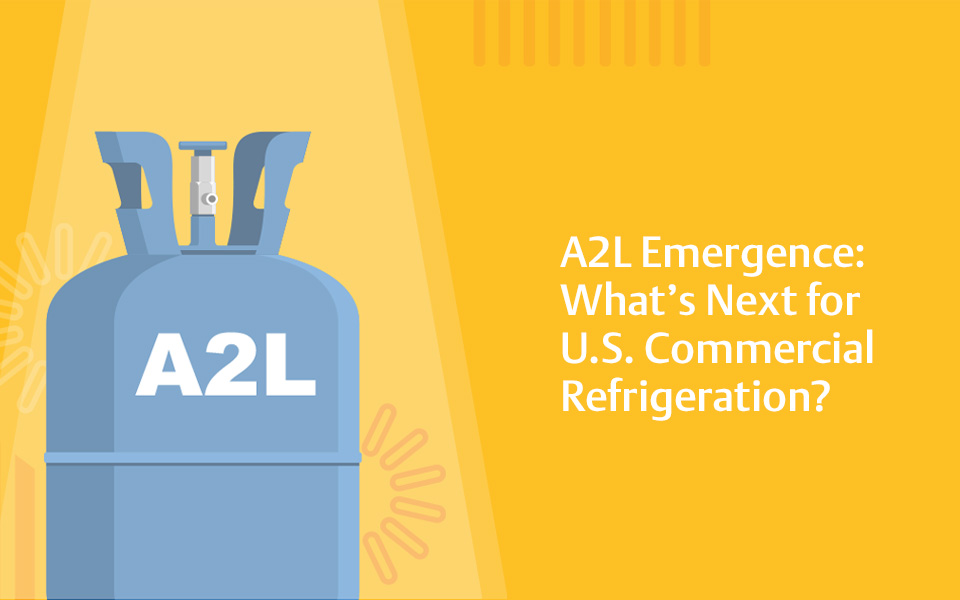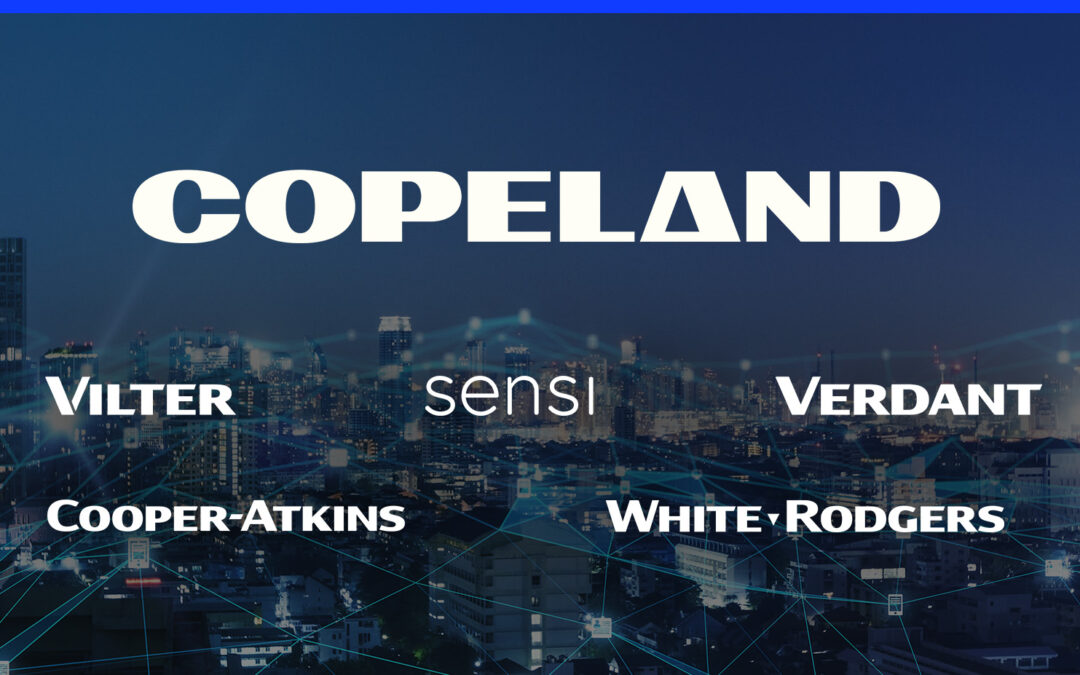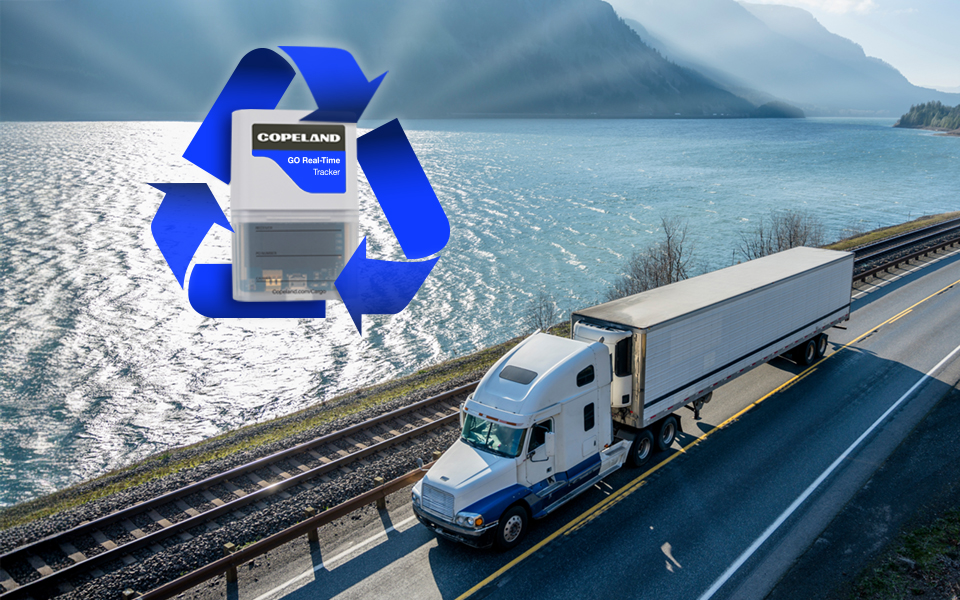*On June 1, 2023 Emerson’s Climate Technologies business became a new standalone company – Copeland. Though our name has changed, we are building on more than a century of HVACR innovation and industry leadership, and Copeland continues to offer the same products, industry stewardship, and learning opportunities you’ve grown to trust. Information found on this webpage posted before June 1, 2023 may contain our old name or branding, but you can be at ease knowing it was created with the knowledge and expertise of Copeland.
The emergence of A2L refrigerants is a topic of many conversations taking place among U.S. commercial refrigeration stakeholders. As the hydrofluorocarbon (HFC) refrigerant phasedown proceeds, A2L refrigerants are among the emerging alternatives capable of achieving needed reductions in global warming potential (GWP). From a regulatory perspective, the process of approving A2Ls for use in commercial refrigeration is well underway. However, the A2L “lower flammability” classification will require A2L refrigeration equipment and installations to follow the guidelines defined by the safety standards governing the use of flammable refrigerants. In an article published by Engineered Systems, I explored these regulatory developments and discussed the current and future potential of A2Ls in the U.S. commercial refrigeration sector. To view the full article, click here.

Establishing a framework for A2L use
As we await the regulatory approval of A2Ls in U.S. commercial refrigeration, it’s important to remember that A2Ls are already approved and deployed in commercial refrigeration applications in Europe and other global regions. These installations have proven to be safe and reliable while filling the growing need for low-GWP refrigeration. They also serve as proofs-of-concept for U.S. food retailers seeking to comply with regulatory mandates or transition to next-generation refrigeration technologies.
Today, U.S. regulatory bodies are actively working to establish a framework for A2L use. Recently published updates to the 2nd edition of UL 60335-2-89 provide product and/or equipment guidelines for the use of A2Ls in self-contained and remote commercial refrigeration equipment. On the application side, ASHRAE 15 is also being updated via Addendum L to align with the revised UL 2-89, which would allow for the expanded use of flammable refrigerants in commercial refrigeration applications.
These key steps will help to give the Environmental Protection Agency (EPA) the safety information it needs to proceed with its A2L refrigerant approval process. Finally, building codes will need to be updated to enable A2L use. All this is to simply say that the regulatory wheels are in motion to soon support the approval and/or safe use of A2L refrigerants.
Understanding the relative flammability of A2Ls
The precedent for the use of flammable refrigerants in U.S. commercial refrigeration has already been set with the natural refrigerant (hydrocarbon) propane (or R-290). With its A3 “higher flammability” classification, R-290 has commonly been used in lower-charge, distributed applications, such as self-contained, stand-alone units and display cases. R-290 also has a long history of use in commercial refrigeration and is considered a known commodity.
In contrast, A2L refrigerants are relatively new, and very few food retailers in the U.S. are familiar with them. A2Ls are composed of various blends of hydrofluoroolefin (HFO) refrigerants and select lower-GWP HFCs. These chemical compositions can produce lower degrees of flammability while delivering low-GWP ratings below 300 and 150 GWP. To clarify the flammability differences between A2L and A3 refrigerants, consider the following metrics:
- Lower flammability limit (LFL) — The LFL of A2Ls is roughly eight times higher than R-290. Thus, A2Ls are less likely to form flammable concentrations, which potentially allows for larger refrigerant charges and/or larger refrigeration applications.
- Minimum ignition energy (MIE) — A2L MIE is much higher than R-290, which has a very low MIE. This makes A2Ls potentially safer to use with electrical components.
- Burning velocity (Su) and heat of combustion (HOC) — Su and HOC are much lower in A2Ls than R-290, which results in a much lower severity of ignition events.
UK retailer helps to prove the case for A2Ls
ASDA, a leading food retailer in the UK, was recently recognized as the first retailer to adopt an all-A2L refrigeration strategy. In 2019, the company successfully completed its transition from a centralized HFC-based architecture to a distributed A2L approach. Moving to a distributed, remote system design also helped ASDA to lower refrigerant charges and limit the potential for refrigerant leaks — which not only minimizes safety risks, but it also ensures that systems are operating at full capacity and efficiency.
A key element of ASDA’s A2L strategy was to gradually upgrade its older HFC cases with newer versions that were also rated for A2L compatibility. Laying this groundwork at the case level helped them to transition from their previous centralized HFC systems to their next generation of A2L distributed refrigeration plants. Their A2L display cases utilize a modular leak detection alarm system that’s integrated with the case controller. If leaks are detected, the system activates an alarm that triggers a shut-off valve, which stops refrigerant flow and helps to ensure operational safety.
As A2Ls become available for use in the U.S., this strategy serves as a potential example for how U.S. retailers might make a similar refrigerant transition in their stores.
To learn more about Copeland’s A2L-rated compressors and leak control systems, please visit the A2L section of our website.

Copeland Aligns its Family of Brands for the Future
As a critical milestone in our journey as a standalone company, Copeland is excited to unveil a...

Recycling Program Contributes to Supply Chain Sustainability
Copeland Is Your Partner for a Greener Supply Chain Throughout the perishable food supply chain,...
Industrial Heat Pumps Deliver Sustainability, Lifecycle Benefits in Food and Beverage Industry
The food and beverage industry faces increasing pressure to reduce scope 1, 2 and 3 emissions. In...
